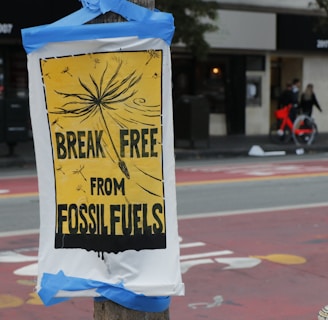Green Hydrogen: A Sustainable Fuel for the Future
Green hydrogen is a clean and renewable fuel that has the potential to decarbonize a wide range of industries. This blog post explains what green hydrogen is, how it is produced, its benefits and challenges, and how it can be used to create a more sustainable future.
9/19/20234 min read


Introduction
Green hydrogen is a clean and renewable fuel that is produced using electrolysis and renewable energy. It is a versatile fuel that can be used to generate electricity, power vehicles, and produce a variety of chemicals and products.
Green hydrogen is a key technology for achieving a net-zero emissions future. It can help to decarbonize sectors that are difficult to abate, such as heavy industry and transportation. Green hydrogen can also be used to produce synthetic fuels, such as green ammonia and green methanol, which can be used to transport energy and decarbonize sectors that cannot be electrified directly, such as shipping and aviation.
How Green Hydrogen is Produced
Green hydrogen is produced using electrolysis, which is a process that uses electricity to split water into hydrogen and oxygen. The electricity used in electrolysis can come from any renewable energy source, such as solar, wind, or hydropower.
The process of producing green hydrogen is relatively simple. Water is fed into an electrolyzer, which uses electricity to split the water molecules into hydrogen and oxygen. The hydrogen is then collected and stored.
Benefits of Green Hydrogen
Green hydrogen has a number of benefits, including:
It is a clean and renewable fuel.
It is versatile and can be used to generate electricity, power vehicles, and produce a variety of chemicals and products.
It can help to decarbonize sectors that are difficult to abate, such as heavy industry and transportation.
It can be used to produce synthetic fuels, such as green ammonia and green methanol, which can be used to transport energy and decarbonize sectors that cannot be electrified directly, such as shipping and aviation.
Challenges of Green Hydrogen
Green hydrogen is still a relatively new technology, and there are a number of challenges that need to be addressed before it can be widely deployed. These challenges include:
The cost of producing green hydrogen is still relatively high.
There is a lack of infrastructure for the production, storage, and transportation of green hydrogen.
There are regulatory barriers to the deployment of green hydrogen in some jurisdictions.
How Green Hydrogen Can Be Used to Create a More Sustainable Future
Green hydrogen can be used to create a more sustainable future in a number of ways. It can be used to:
Decarbonize the power sector: Green hydrogen can be used to generate electricity without emitting greenhouse gases. This can help to reduce our reliance on fossil fuels and mitigate climate change.
Decarbonize transportation: Green hydrogen can be used to power vehicles, such as cars, trucks, and ships. This can help to reduce air pollution and greenhouse gas emissions from the transportation sector.
Decarbonize industry: Green hydrogen can be used to produce a variety of chemicals and products, such as steel, cement, and ammonia. This can help to decarbonize the industrial sector, which is a major source of greenhouse gas emissions.
Produce synthetic fuels: Green hydrogen can be used to produce synthetic fuels, such as green ammonia and green methanol. These fuels can be used to transport energy and decarbonize sectors that cannot be electrified directly, such as shipping and aviation.
Here are some stats and data from India and around the world regarding green hydrogen:
India
India has set a target to produce 5 million tonnes of green hydrogen per year by 2030.
India has a number of green hydrogen projects under development, including:
The Reliance Industries green hydrogen project in Gujarat, which will produce 100,000 tonnes of green hydrogen per year.
The Tata Chemicals green hydrogen project in Gujarat, which will produce 50,000 tonnes of green hydrogen per year.
The Adani Green Energy green hydrogen project in Gujarat, which will produce 50,000 tonnes of green hydrogen per year.
India is also developing a number of green hydrogen clusters, which will bring together producers, consumers, and other stakeholders in the green hydrogen ecosystem.
World
The global green hydrogen market is expected to grow from $1.5 billion in 2022 to $111.1 billion by 2028.
The top three countries in the global green hydrogen market are:
China
United States
European Union
The top three applications of green hydrogen are:
Industrial
Power generation
Transportation
Studies and Research
A recent study by the International Renewable Energy Agency (IRENA) found that green hydrogen could be the key to decarbonizing the global economy. The study found that green hydrogen could meet up to 24% of global energy demand by 2050.
Another study by the Hydrogen Council found that the global green hydrogen market could reach $10 trillion by 2050. The study found that green hydrogen could create up to 30 million jobs worldwide.
Conclusion
Green hydrogen is a promising technology for creating a more sustainable future. It is a clean and renewable fuel that can be used to decarbonize a wide range of industries. While green hydrogen is still a relatively new technology, there is growing interest and investment in green hydrogen projects around the world.
India is well-positioned to become a leader in the global green hydrogen market. India has abundant renewable energy resources, and the Indian government is committed to developing the green hydrogen sector.
Green Goods Guide
Green goods are products that are produced in a sustainable way. They can help to reduce our impact on the planet and contribute to the SDGs.
Here are some examples of green goods that can help to support the development and deployment of green hydrogen:
Renewable energy products: Renewable energy products, such as solar panels and wind turbines, can be used to produce the electricity needed to produce green hydrogen.
Electrolyzers: Electrolyzers are the devices used to produce green hydrogen.
Green hydrogen storage and transportation equipment: Green hydrogen storage and transportation equipment is needed to store and transport green hydrogen safely and efficiently.
Green hydrogen-powered vehicles: Green hydrogen-powered vehicles are vehicles that are powered by green hydrogen.
Green hydrogen-powered industrial equipment: Green hydrogen-powered industrial equipment is industrial equipment that is powered by green hydrogen.
Conclusion
Green hydrogen is a promising technology for creating a more sustainable future. It is a clean and renewable fuel that can be used to decarbonize a wide range of industries. While green hydrogen is still a relatively new technology, there is growing interest and investment in green hydrogen projects around the world.
We can all help to support the development and deployment of green hydrogen by choosing green goods and making sustainable choices in our daily lives.
Studies and Research
Here are some studies and research papers on green hydrogen:
The Global Green Hydrogen Market Report 2022-2027 by Market Research Future
